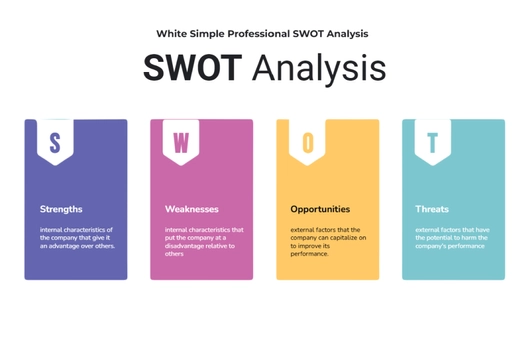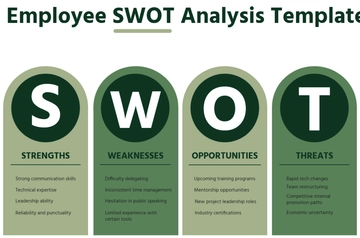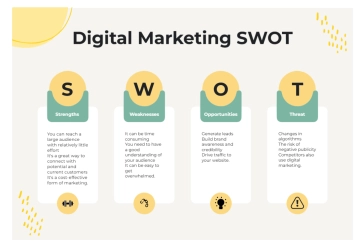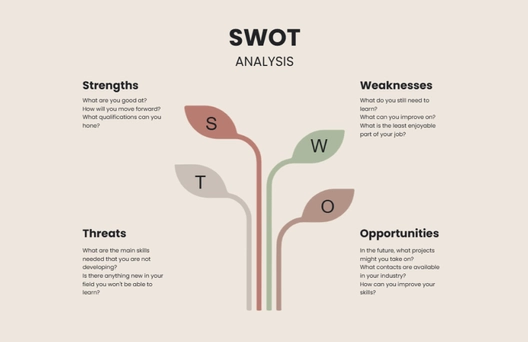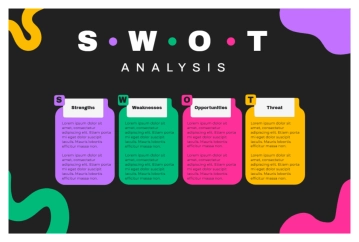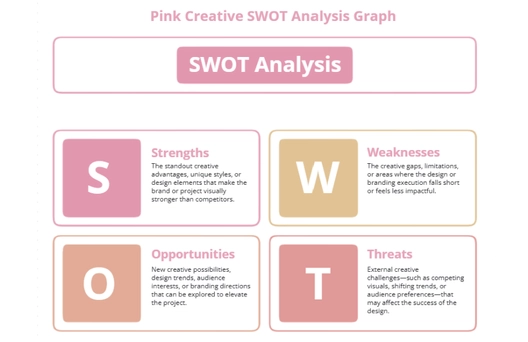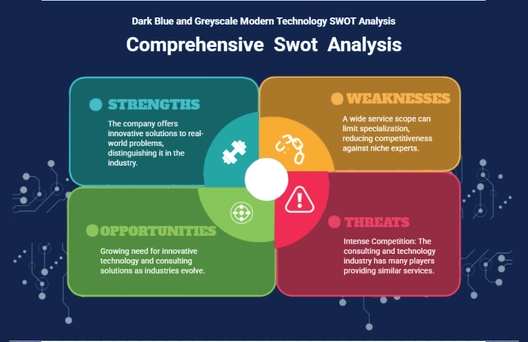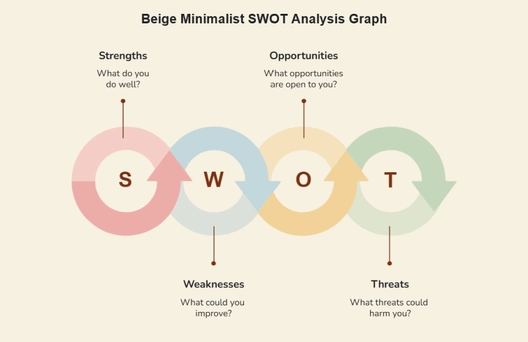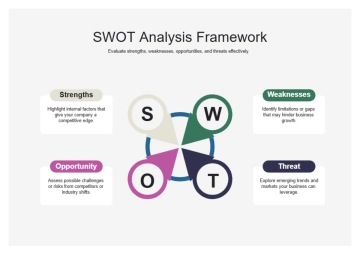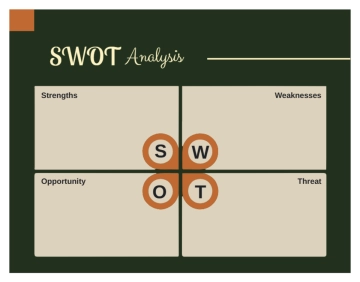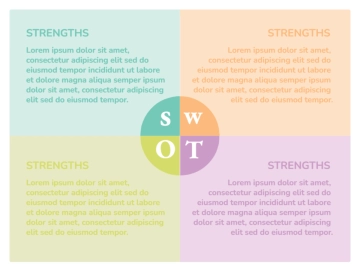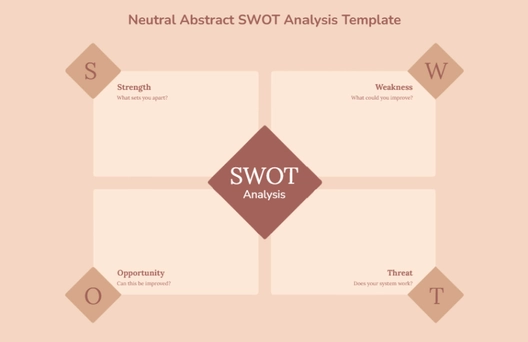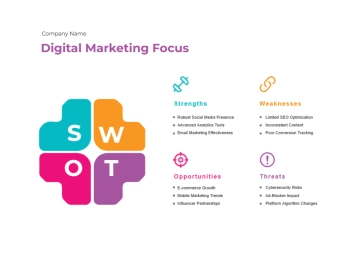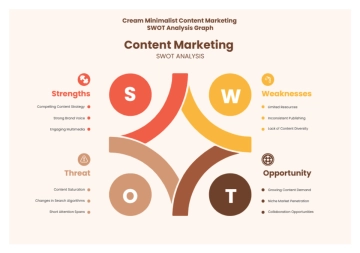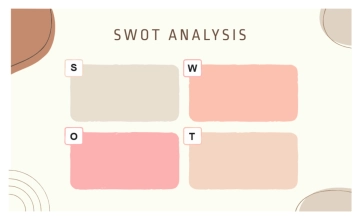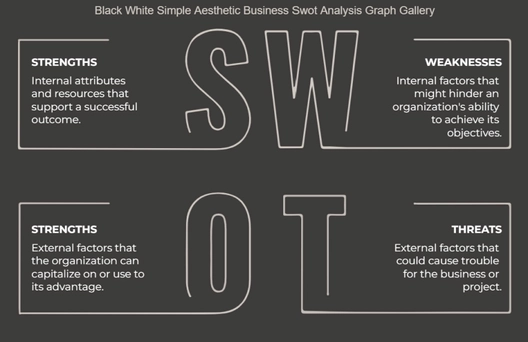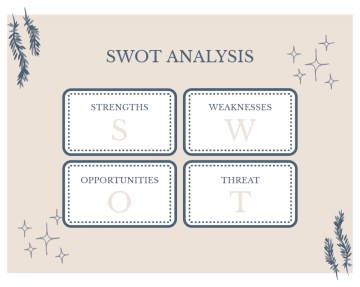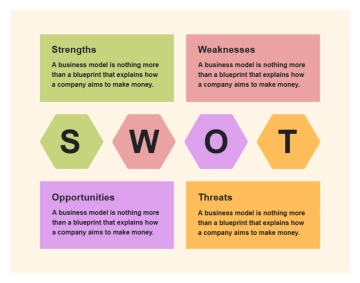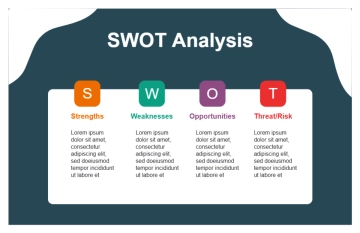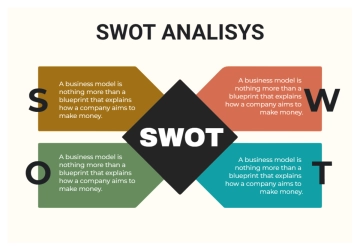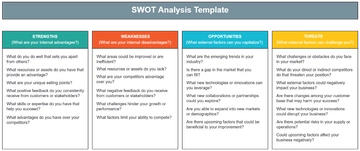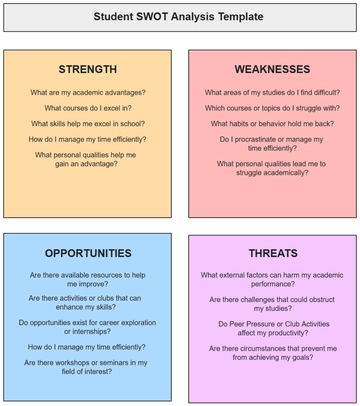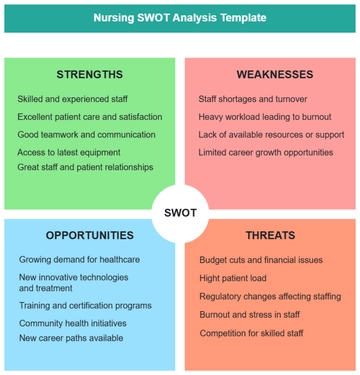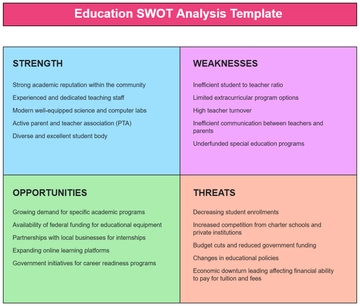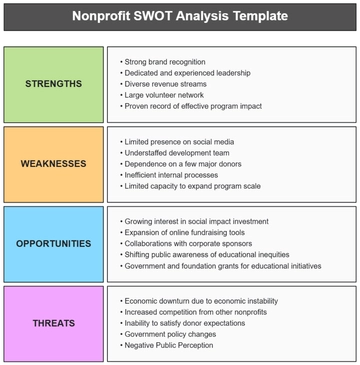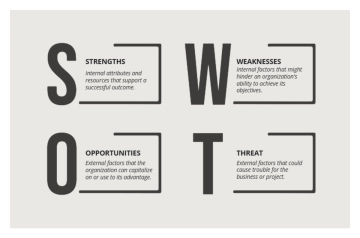Free Marketing Brand SWOT Analysis
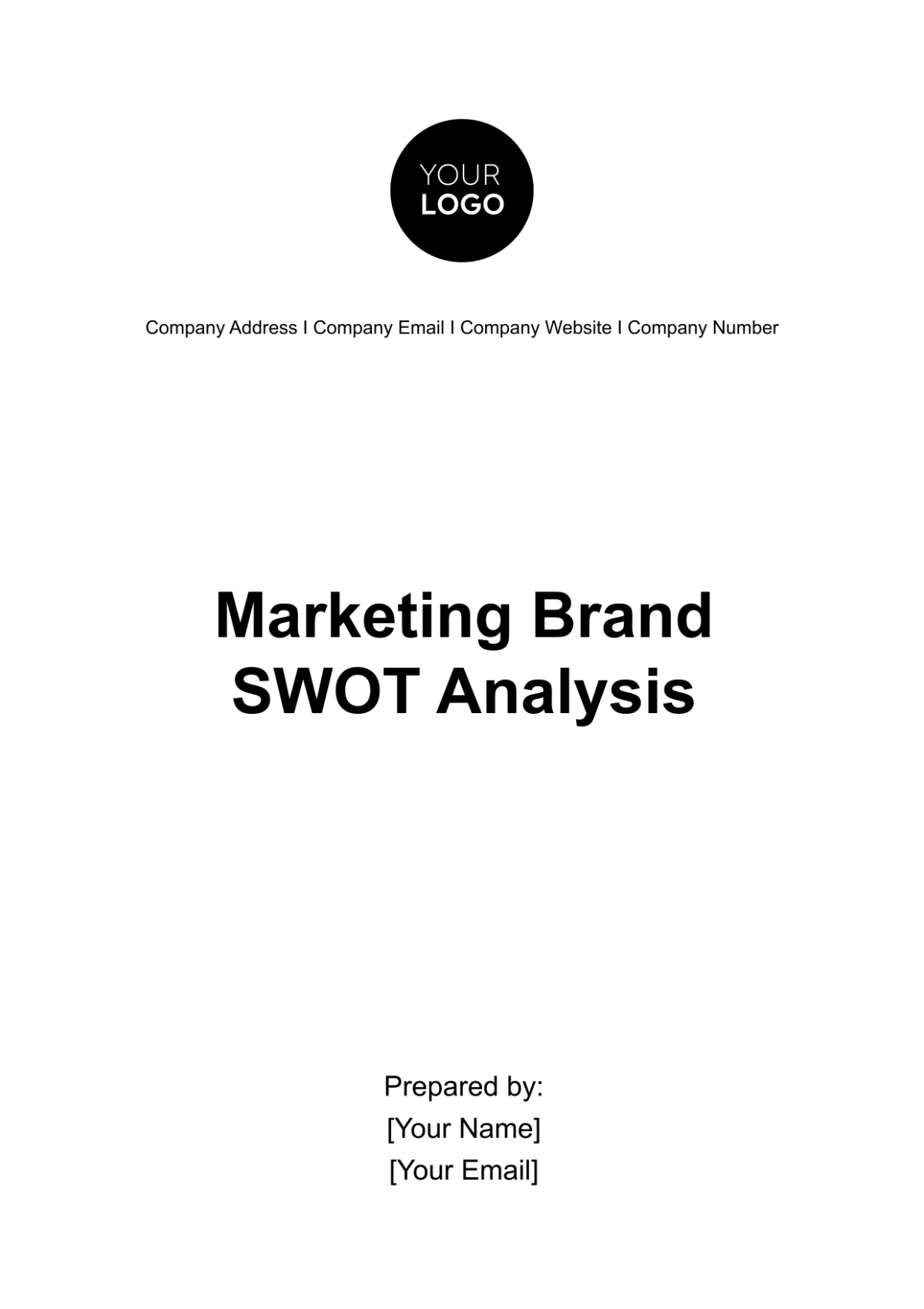
Introduction
This report provides a SWOT analysis focusing specifically on the marketing brand for [Your Company Name]. In an ever-evolving global marketplace, understanding the nuances and dynamics of our brand can provide a significant competitive edge.
Purpose of the SWOT Analysis
The SWOT analysis aims to critically evaluate [Your Company Name]'s brand positioning in the market. This analysis serves as a compass, guiding the company's marketing strategies and initiatives towards more sustainable growth and brand equity.
Methodology
To conduct this analysis, data was sourced from various internal company reports, market research studies, customer feedback, and competitive intelligence platforms. Interviews were also conducted with key stakeholders, including senior management, marketing teams, and select customers.
Strengths
The core strengths of [Your Company Name]'s marketing brand highlight our robust positioning in the market. Rooted in consistent strategy, innovation, and the delivery of unparalleled value to our customers, these strengths underscore the brand's resilience and potential for future growth.
STRENGTHS |
Brand Recognition Consistently recognized among top brands globally. |
Customer Loyalty A testament to the trust and quality associated with our brand. |
Innovative Marketing Campaigns Our campaigns resonate with diverse audiences, driving engagement and conversion. |
Digital Presence A robust online footprint allowing real-time customer interaction and feedback. |
Brand Recognition: Our global recognition is an accolade in itself, with the company securing the 5th rank in the 2050 Global Brand Recognition Index.
Customer Loyalty: Our brand isn't just about transactions but building lasting relationships. This is reflected in the notable 85% repeat customer rate, marking a 20% increase from the previous year, 2049.
Innovative Marketing Campaigns: The resonance of our marketing campaigns with diverse audiences has been palpable. Not only did we bag the title for the 2050 Best Integrated Marketing Campaign, but the ROI on our primary campaigns soared by 300%.
Digital Presence: Our digital blueprint is expansive, with over 3 million followers spanning various social media platforms and a significant 30% uptick in organic website traffic this year.
Weaknesses
Every brand, regardless of its stature or success, has areas of improvement. Recognizing and confronting these vulnerabilities is the first step towards fortifying and elevating our brand. [Your Company Name]'s marketing brand, while formidable, is not exempt from such challenges. Here's an in-depth look into these areas:
WEAKNESSES |
Limited Local Marketing Our outreach in certain regions, notably East Africa and Central Asia. |
Dependency on Digital Platforms The overwhelming tilt of our campaigns towards digital platforms in 2050 |
Aging Customer Base Our limited penetration within the younger demographic in 2050 |
Static Brand Image A brand visual and persona that's largely been unchanged since 2050 |
Limited Local Marketing: While we've made significant strides globally, our diminished presence in emerging markets like East Africa and Central Asia indicates missed opportunities. Tailored, localized marketing strategies can help tap into these high-growth areas, resonating more with local audiences.
Dependency on Digital Platforms: Our pronounced digital tilt has its merits, but an over-reliance, as seen with 90% of our 2050 campaigns being digital, also presents risks. Platform changes, algorithm shifts, and potential market oversaturation can impact our reach and efficacy.
Aging Customer Base: Loyalty from older demographics has been our strength, but the 25% market share among Generation Z in 2050 signals a challenge. Engaging this younger audience is vital for the brand's future sustainability and growth.
Static Brand Image: Consistency fosters brand trust, but an image that hasn't evolved since 2050 can be seen as stagnation. Refreshing our brand persona can make us more relatable to newer generations and reflect market evolutions.
Opportunities
For every business, the horizon is dotted with opportunities waiting to be seized. These potential paths for expansion, innovation, and growth can shape the future trajectory of [Your Company Name]. Here are the specific opportunities we've identified:
OPPORTUNITIES |
Global Expansion Untapped markets in regions like South America and Southeast Asia. |
Partnership Opportunities Potential collaborations with influencers in the fashion and tech industries for 2051. |
Sustainable Marketing A growing trend towards eco-friendly consumer preferences. |
Diversifying Advertising Channels The emergence of AR and VR platforms as potential marketing avenues. |
Global Expansion: The world is ever-evolving, and with it comes emerging markets that are ripe for entry. South America and Southeast Asia, in particular, present robust markets with burgeoning middle classes, technological adoption, and changing consumer habits. Penetrating these markets can offer a fresh consumer base and diversified revenue streams.
Partnership Opportunities: Collaborations have always been a conduit for reaching wider audiences and infusing brand messages with fresh perspectives. As the fashion and tech industries are currently experiencing surges in consumer engagement, partnering with key influencers within these domains in 2051 can amplify our brand's resonance.
Sustainable Marketing: The global shift towards sustainability isn't just a phase—it's the future. A 2050 survey highlighted that 60% of global customers now prefer brands with eco-friendly stances. Aligning our brand with sustainable practices and emphasizing this in our marketing can foster deeper connections with a conscientious audience.
Diversifying Advertising Channels: As technology evolves, so do the platforms for advertising. Augmented Reality (AR) and Virtual Reality (VR) offer immersive experiences, making brand messages more engaging and memorable.
Threats
Every brand, no matter how fortified its position may seem, faces external challenges that can influence its trajectory. It is vital for [Your Company Name] to remain vigilant and proactive in identifying potential threats to ensure long-term stability and success. Here are the specific threats we've discerned:
THREATS |
Intense Competition The rise of formidable brands such as XYZ Corp and AlphaTech in 2050. |
Economic Downturn Predicted global recessionary trends in 2052. |
Changing Consumer Behavior A notable shift of global consumers in 2050 that prioritize peer reviews. |
Regulatory Changes Anticipated stricter advertising regulations, particularly in the EU by 2051. |
Intense Competition: The global marketplace is dynamic and ever-evolving. Brands like XYZ Corp and AlphaTech have made significant inroads in 2050, challenging established players. Their innovative approaches and aggressive strategies can potentially dilute our market share, necessitating a need for us to stay innovative and responsive.
Economic Downturn: Economic fluctuations are inevitable. The projected global recession in 2052 can impact consumer spending habits, particularly in discretionary categories. A downturn could tighten budgets and demand more ROI-focused marketing strategies.
Changing Consumer Behavior: Trust is the cornerstone of brand loyalty. However, with 40% of global consumers in 2050 leaning more towards peer reviews than branded content, there's a need to re-evaluate and adapt our marketing approach. Authentic engagement and fostering genuine customer testimonials could become more critical.
Regulatory Changes: Navigating the global landscape means adhering to ever-changing regulations. The EU's anticipated move towards stricter advertising regulations by 2051 could necessitate significant adjustments in our campaigns targeting this region. Staying ahead of these changes and ensuring compliance will be vital to maintain market presence and avoid potential legal ramifications.
Recommendations
In light of the insights derived from our SWOT analysis, it's pivotal to formulate actionable recommendations to ensure [Your Company Name] continues to thrive and bolster its brand equity. These recommendations are reactive measures and proactive strategies designed to steer the brand towards sustainable growth and success.
Strategic Initiatives
Focused on forward momentum, these initiatives aim to capitalize on our strengths, rectify our weaknesses, and seize the vast opportunities in our horizon.
Brand Refresh: Given the static brand image observed, it might be the opportune moment for a brand refresh. This doesn't necessitate a complete overhaul but subtle changes to resonate with younger demographics, reflecting contemporary tastes and trends.
Diversified Marketing Channels: To address the over-reliance on digital platforms, consider blending traditional media, experiential marketing, and newer platforms like AR and VR. This diverse approach can help in reaching a broader audience spectrum.
Localized Campaigns: In regions where our presence is weaker, such as East Africa and Central Asia, crafting campaigns tailored to local cultures and preferences can lead to deeper engagement and brand resonance.
Stakeholder Engagement: To counter the preference for peer reviews over branded content, initiate programs that engage and encourage genuine feedback from customers, thereby fostering organic brand advocacy.
Risk Mitigation Measures
To navigate the dynamic business ecosystem, it's crucial to be prepared for potential threats. These measures are designed to cushion the company against foreseeable challenges and ensure we remain resilient.
Competitive Analysis: Continuously monitor and analyze moves by competitors, especially rising brands like XYZ Corp and AlphaTech. Such insights can inform our strategies, helping to maintain a competitive edge.
Economic Preparedness: In anticipation of the predicted economic downturn, diversify revenue streams, explore cost-effective marketing strategies, and ensure a flexible budget allocation to swiftly adapt to changing economic scenarios.
Regulatory Compliance: Establish a dedicated team to stay updated on global advertising regulations, ensuring our campaigns remain compliant, especially in regions with anticipated regulatory changes like the EU.
Consumer Behavior Insights: Regularly conduct market research and surveys to stay attuned to shifting consumer behaviors and preferences. This proactive approach can help in tweaking strategies to align with market demands.
While challenges and uncertainties are intrinsic to the business landscape, a brand equipped with insights, a clear strategy, and adaptability is well-poised to navigate these intricacies. These recommendations, when implemented, can propel [Your Company Name] to newer heights while ensuring resilience and relevance in a dynamic market.
Future Projections
While understanding the present landscape is vital, forecasting future trends and positioning [Your Company Name] aptly for what lies ahead is equally crucial. Based on our current standing, strengths, and the opportunities we've identified, here's a glimpse into the next decade:
Market Expansion: With a keen eye on emerging markets, particularly in South America and Southeast Asia, we anticipate establishing a robust presence there by 2060. These regions are predicted to contribute to approximately 20% of our global revenues by that time.
Technological Integration: With the rise of AR and VR, we foresee the company pioneering immersive customer experiences, setting industry standards by 2055. This technological forefront will not only enhance user engagement but will also redefine marketing paradigms.
Sustainability Drive: By 2058, the company aims to be a beacon of sustainability in its sector. With eco-friendly practices integrated into every facet of our operations, we anticipate achieving a 90% reduction in our carbon footprint and being recognized as an industry leader in sustainable initiatives.
Brand Evolution: Given the changing consumer demographics and preferences, we project a phased brand evolution over the next seven years. This will ensure we remain relevant to newer generations while retaining the essence that our long-standing patrons cherish.
Product Innovations: Innovation is in the company's DNA. By 2060, we plan to introduce a range of products leveraging cutting-edge technology, potentially contributing to 30% of our annual revenues, and firmly positioning us as pioneers in our domain.
Conclusion
While [Your Company Name]'s marketing brand boasts an impressive repertoire of strengths and is positioned favorably to harness expansive opportunities as we advance through 2050, it's imperative not to rest on our laurels. Acknowledging our vulnerabilities and proactively countering potential external threats is just as vital.
By adeptly leveraging our brand's core competencies and simultaneously addressing its challenges, we can sculpt a holistic strategy. This comprehensive approach will fortify [Your Company Name]'s position, ensuring that our brand doesn't just navigate but thrives and leads in the evolving market landscape of the forthcoming years.
- 100% Customizable, free editor
- Access 1 Million+ Templates, photo’s & graphics
- Download or share as a template
- Click and replace photos, graphics, text, backgrounds
- Resize, crop, AI write & more
- Access advanced editor
Discover the Marketing Brand SWOT Analysis Template, exclusively on Template.net! This editable and customizable tool allows you to conduct comprehensive SWOT analyses effortlessly. Tailor insights to your brand's needs using our Ai Editor Tool. Unlock strategic clarity and make informed decisions with this essential resource. Get yours now!
